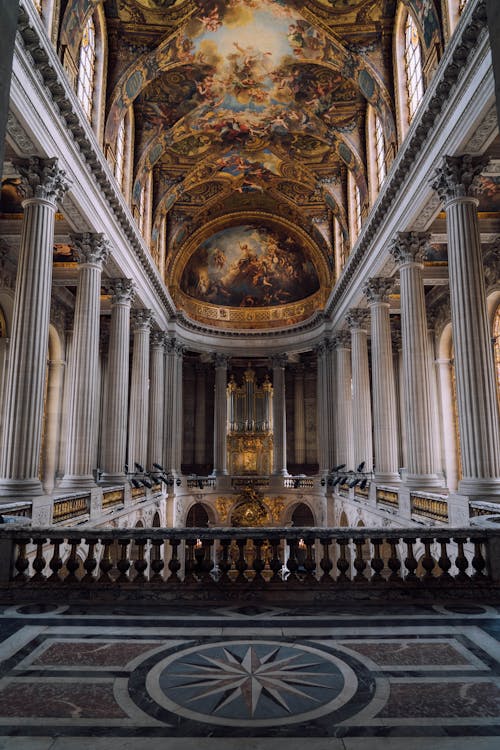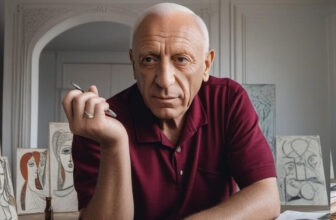
Why is the Palace of Versailles so popular?
The Palace of Versailles, located in the Île-de-France region of France, is one of the most iconic and visited landmarks in the world. Renowned for its opulent architecture, sprawling gardens, and historical significance, the palace holds a unique place in both French and global culture. Its popularity transcends borders, attracting millions of visitors annually, and it has been immortalized in literature, art, and cinema. This discussion delves into what makes the Palace of Versailles so extraordinary and why it continues to captivate the imagination of people worldwide.
The History of the Palace of Versailles
The Palace of Versailles began as a modest hunting lodge built by King Louis XIII in 1623. However, it was under the reign of his son, King Louis XIV, the Sun King, that Versailles was transformed into the grand palace we know today. Starting in 1661, Louis XIV embarked on an ambitious project to expand and embellish the estate, turning it into a symbol of absolute monarchy and French cultural supremacy.
The construction of Versailles was more than a demonstration of wealth; it was a statement of power. By relocating the royal court from Paris to Versailles in 1682, Louis XIV centralized the French government, ensuring that the nobility remained under his watchful eye. The palace became the epicenter of political and cultural life in France, hosting lavish events, ceremonies, and daily rituals that reinforced the king’s authority.
Versailles continued to serve as a royal residence until the French Revolution in 1789, when King Louis XVI and Queen Marie Antoinette were forced to leave. After the revolution, the palace fell into a state of neglect before being repurposed as a museum in the 19th century. Today, the Palace of Versailles is a UNESCO World Heritage Site and a symbol of France’s rich history and artistic achievements.
Architectural Grandeur
The Palace of Versailles is a masterpiece of Baroque architecture, characterized by its grandeur, symmetry, and attention to detail. Designed by architects Louis Le Vau, Jules Hardouin-Mansart, and others, the palace reflects the tastes and ambitions of Louis XIV.
The Exterior
The exterior of the palace is an awe-inspiring sight, with its golden gates, intricate stonework, and sweeping facades. The central courtyard, known as the Cour d’Honneur, offers a dramatic introduction to the palace’s magnificence. The use of classical elements like columns, pilasters, and statues adds to the building’s timeless elegance.
The Interior
The interiors of Versailles are equally breathtaking. The Hall of Mirrors (Galerie des Glaces) is perhaps the most famous room in the palace. This grand gallery, adorned with 357 mirrors and 17 arched windows, reflects the sunlight from the gardens, creating a dazzling effect. It was here that the Treaty of Versailles was signed in 1919, ending World War I.
Other notable rooms include the King’s Grand Apartments, the Queen’s Grand Apartments, and the Royal Chapel. Each space is adorned with exquisite paintings, sculptures, and furnishings that showcase the skill of French artisans.
The Gardens of Versailles

The Gardens of Versailles Paris
The gardens of Versailles, designed by landscape architect André Le Nôtre, are an integral part of the palace’s appeal. Spanning over 800 hectares, the gardens are a testament to the French formal garden style, characterized by geometric patterns, symmetry, and meticulous landscaping.
The gardens feature a network of pathways, parterres, fountains, and sculptures, all arranged to create a harmonious and visually stunning environment. The Grand Canal, a man-made waterway, provides a picturesque setting for boating, while the Orangerie houses a collection of citrus trees and exotic plants.
Seasonal fountain shows and musical garden events add to the allure, allowing visitors to experience the gardens as they were intended during Louis XIV’s reign.
Cultural and Historical Significance
The Palace of Versailles is not just a beautiful building; it is a symbol of France’s political and cultural history. It represents the zenith of absolute monarchy under Louis XIV and serves as a reminder of the complexities of French history, including the tumultuous events of the French Revolution.
A Center of Art and Culture
During Louis XIV’s reign, Versailles became a hub of artistic innovation. The palace hosted performances, concerts, and plays, often featuring the works of renowned artists like Molière and Jean-Baptiste Lully. The opulent setting of Versailles inspired artists and architects across Europe, influencing the development of Baroque and Rococo styles.
Political Symbolism
Versailles was more than a residence; it was a stage for the display of royal power. The daily rituals of court life, such as the king’s levee (morning routine) and coucher (evening routine), were carefully orchestrated to reinforce the monarch’s authority. The palace also served as a venue for important political events, such as the signing of treaties and the reception of foreign dignitaries.
Why Is Versailles So Popular?
The enduring popularity of the Palace of Versailles can be attributed to several factors:
1. Architectural and Artistic Mastery
The palace’s architectural brilliance and artistic treasures continue to awe visitors. From the Hall of Mirrors to the intricate gardens, every aspect of Versailles reflects the highest standards of craftsmanship and creativity.
2. Historical Resonance
Versailles offers a tangible connection to pivotal moments in history. Visitors can walk through the same halls where Louis XIV held court, where Marie Antoinette resided, and where the Treaty of Versailles was signed. This sense of history adds depth to the experience.
3. Cultural Influence
The Palace of Versailles has left an indelible mark on global culture. It has been featured in films, books, and art, perpetuating its iconic status. The palace also hosts exhibitions and events that highlight its cultural significance.
4. Accessibility and Preservation
The French government and UNESCO have invested significantly in preserving and promoting Versailles. Guided tours, educational programs, and digital resources make the palace accessible to a wide audience.
The Visitor Experience
A visit to Versailles is a journey into the past. The experience typically includes exploring the palace’s opulent interiors, strolling through the gardens, and discovering lesser-known areas like the Trianon Palaces and the Queen’s Hamlet. Audio guides, guided tours, and interactive exhibits provide insights into the history and significance of each space.
Special events, such as the Grandes Eaux musicales (musical fountain shows) and the Versailles Fêtes Galantes (period costume ball), offer unique ways to engage with the palace’s heritage.
Challenges and Criticisms
While the Palace of Versailles is celebrated worldwide, it is not without its challenges and criticisms. The sheer volume of visitors can lead to overcrowding, detracting from the experience. Conservation efforts face the ongoing challenge of balancing preservation with accessibility.
Additionally, some critics argue that the focus on Versailles’s opulence can overshadow the historical realities of inequality and excess that contributed to the French Revolution. Addressing these perspectives is crucial for a comprehensive understanding of the palace’s legacy.
The Palace of Versailles is a monument to human creativity, ambition, and resilience. Its architectural splendor, historical significance, and cultural impact make it a beacon of French heritage and a must-visit destination for people around the globe. Whether admired for its beauty, studied for its history, or experienced as a cultural event, Versailles continues to captivate and inspire, proving that it is much more than just a palace—it is a timeless symbol of the enduring allure of art and history.





